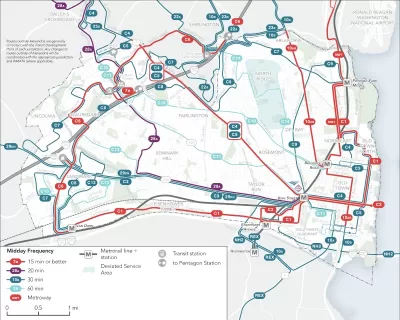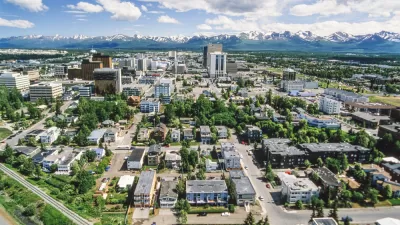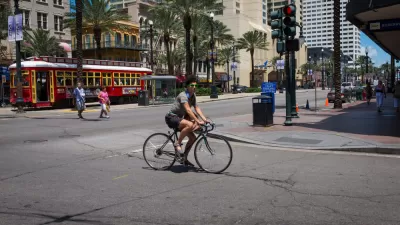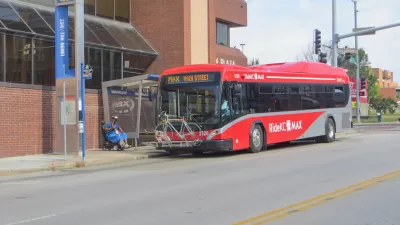The city of Alexandria, Virginia is asking the public to weigh in on a fundamental question of bus transit planning: ridership or coverage?

The city of Alexandria, Virginia is undertaking a Transit Vision planning process to lay the groundwork for the next ten to 20 years of bus service in the city. The city runs its won DASH bus service, but the WMATA’s Metrobus also operates in the city. Connections to the Virginia Railway Express (VRE), Metrorail, and external bus operators like the Fairfax Connector and Arlington Transit (ART) will also figure into the bus service equation in the city.
Greg Otten reports a few weeks after the city released a Transit Vision Concepts Report [pdf] on the findings of a community engagement process that included an online survey and several public meetings. The public input process is designed to determine "which of two scenarios the City and DASH should pursue: increased frequency of bus service trading off coverage, or, increased coverage of the city with less frequent bus service. The plan assumes a 20% increase in bus service."
The results [pdf] of the initial public input process showed "that a majority of Alexandria bus riders want fast and frequent bus service," according to Otten. A new survey is drilling down deeper into public preferences between two scenarios, referred to by planners as "Ridership" or "Coverage." Otten explains:
“Ridership” means increased and more frequent bus service in dense areas at the expense of fewer parts of the city being served by buses. The assumption is that more people will ride because there is faster and more frequent service in dense areas. “Coverage” means increased service in some areas at the expense of frequency. More of the city will be served, and thus more people potentially able to ride.
After gathering input on these two concepts, planners will proceed with a design for a new bus network in the city.
FULL STORY: Alexandria is updating its bus network, and riders want faster and more frequent service

Alabama: Trump Terminates Settlements for Black Communities Harmed By Raw Sewage
Trump deemed the landmark civil rights agreement “illegal DEI and environmental justice policy.”

Planetizen Federal Action Tracker
A weekly monitor of how Trump’s orders and actions are impacting planners and planning in America.

The 120 Year Old Tiny Home Villages That Sheltered San Francisco’s Earthquake Refugees
More than a century ago, San Francisco mobilized to house thousands of residents displaced by the 1906 earthquake. Could their strategy offer a model for the present?

Ken Jennings Launches Transit Web Series
The Jeopardy champ wants you to ride public transit.

BLM To Rescind Public Lands Rule
The change will downgrade conservation, once again putting federal land at risk for mining and other extractive uses.

Indy Neighborhood Group Builds Temporary Multi-Use Path
Community members, aided in part by funding from the city, repurposed a vehicle lane to create a protected bike and pedestrian path for the summer season.
Urban Design for Planners 1: Software Tools
This six-course series explores essential urban design concepts using open source software and equips planners with the tools they need to participate fully in the urban design process.
Planning for Universal Design
Learn the tools for implementing Universal Design in planning regulations.
Clanton & Associates, Inc.
Jessamine County Fiscal Court
Institute for Housing and Urban Development Studies (IHS)
City of Grandview
Harvard GSD Executive Education
Toledo-Lucas County Plan Commissions
Salt Lake City
NYU Wagner Graduate School of Public Service





























